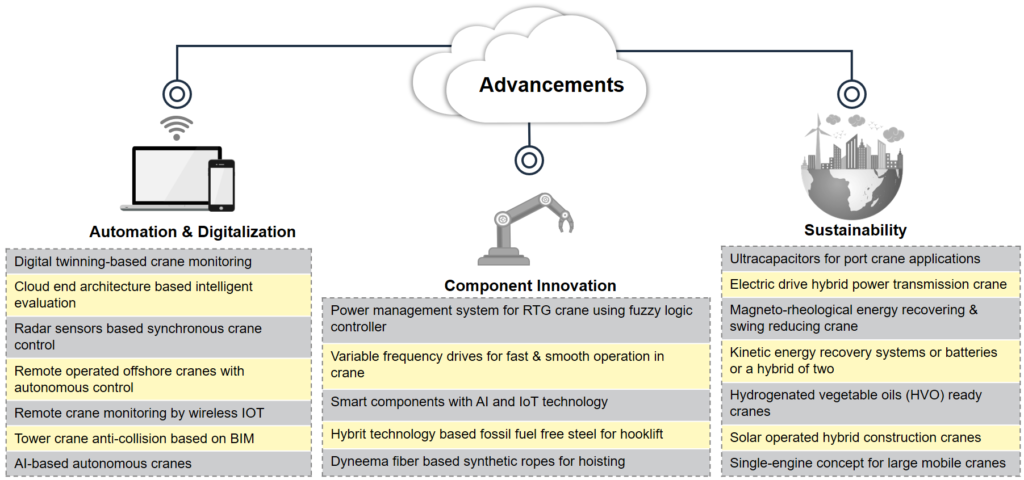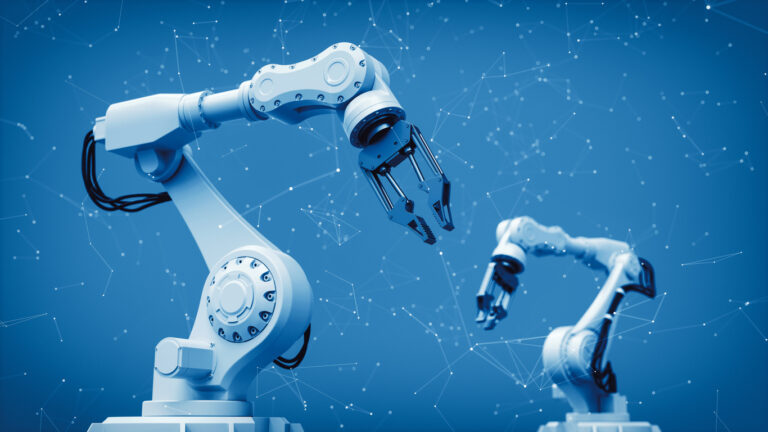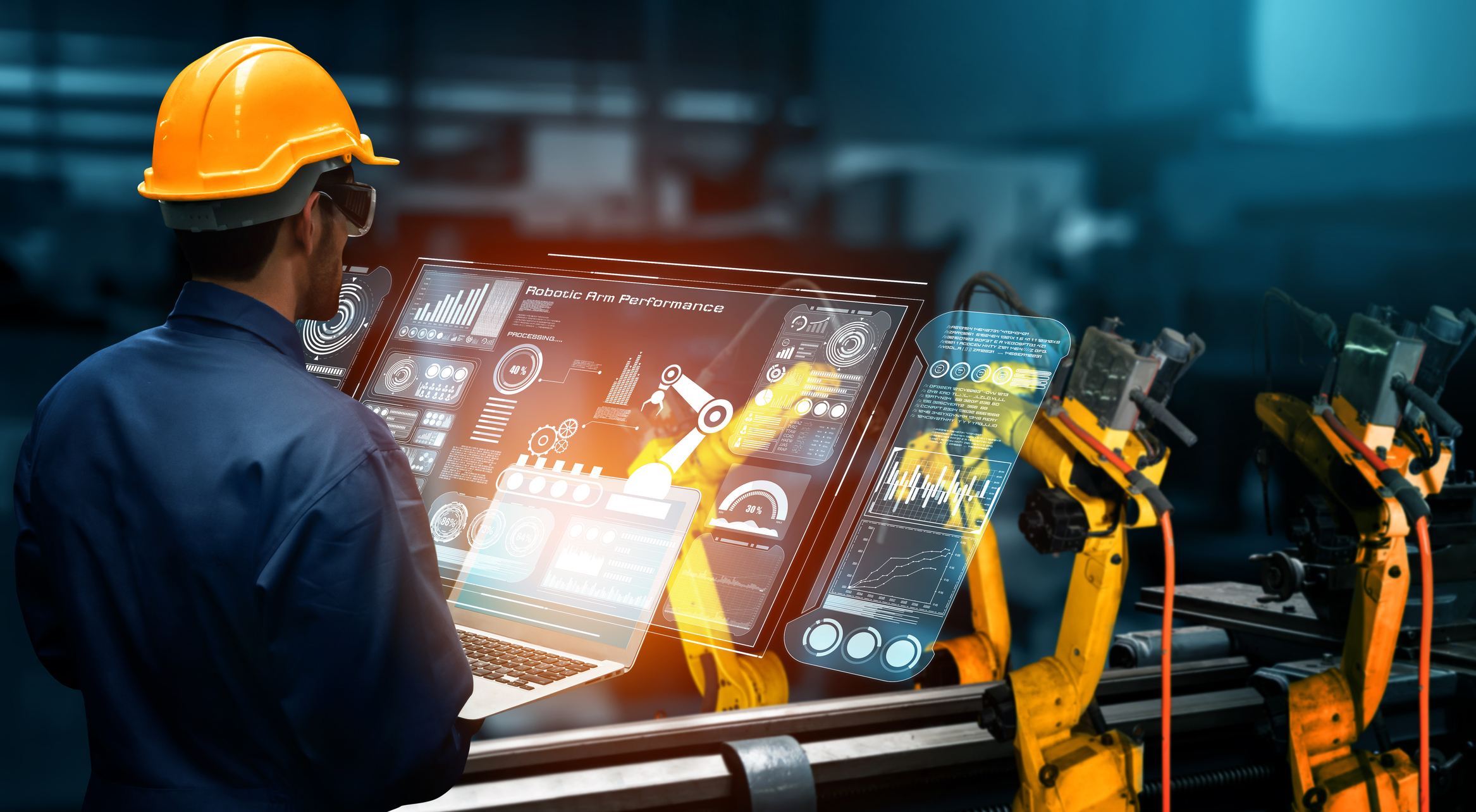How Automation and Digitalization are Revolutionizing Crane Operations ?
In the dynamic world of today’s construction industry, the pursuit of efficiency and productivity stands as an undeniable imperative. As we stand witness to the dawning age of automation and digitalization, crane operations have undergone a profound metamorphosis. It’s ushering in a revolution that is reshaping the very essence of project execution. This content ventures into the profound impact these technological leaps have had on streamlining construction processes. Hence, elevating overall project outcomes.
Through ingenious automation solutions, cranes now exhibit an unprecedented capacity. It can execute intricate maneuvers with exceptional precision, significantly reducing error margins and enhancing safety across construction sites. Simultaneously, the era of digitalization has ushered in a new realm of coordination and communication within construction teams. So, enabling real-time data exchange and fostering seamless collaboration. By integrating cutting-edge software and hardware systems, crane operators can meticulously fine-tune their workflow, and monitor equipment performance. Moreover, it can harness data analytics to make well-informed decisions that amplify efficiency and mitigate downtime.
Automation and digitalization revolutionized crane operations, encompassing autonomous lifting and predictive maintenance. Also, this integration speeds up construction projects, reduces costs, and improves precision. Crane operations have undergone a significant transformation, benefiting construction efficiency and cost-effectiveness. As the construction industry wholeheartedly embraces these innovative technologies, the horizon of crane operations promises an auspicious future. Thus, heralding an era where construction processes are streamlined, and project outcomes are optimized to their fullest potential. Join us as we embark on an exhilarating exploration. Moreover, you can know how automation and digitalization are forging the future of crane operations in the construction industry.
Stellarix Research on Crane Market
According to Stellarix Research, the global crane market can grow from 29.05 US$ billion in 2021 to 45.36 US$ billion in 2031 at a CAGR of 4.56%. The integration of sustainable practices, improved structures, and enhanced automated safety features can increase the demand for newly developed cranes, as per expectations.

Crucial Findings
- Andritz presented the world’s first autonomously operated crane with the AI feature, Metris ANDITM, for environmentally friendly, cost-effective operation of log handling. Artificial intelligence makes it possible to track and categorize the wood received in real-time with great precision. The crane runs on electricity, produces no CO2 emissions, and reduces noise pollution
- Cargotec has introduced the Hiab iQ.958 HiPro heavy loader crane, which comes with the advanced operating system SPACEevo to improve its efficiency and productivity. The crane delivers an excellent lift-to-weight ratio
- Manitex has launched the ECSY-Electric Crane System, tailored for lifting environments that require low noise levels and minimal emissions
Key Technologies
- Kier utilizes Punch Flybrid flywheel technology in tower cranes, which showed that fuel consumption and carbon emissions reduced by 40%
- Versatile, a construction technology start-up that uses AI and IoT technologies to capture crane data and turns it into actionable insights for optimizing crane efficiency and improving project performance
- Incorporating artificial intelligence (AI), virtual reality (VR), machine learning, and augmented reality (AR) technologies can enhance efficiency and precision. Moreover, the overall safety of overhead cranes
Key Innovations
- Energy Vault proposes an energy storage system for cranes that stores and releases energy by stacking of blocks. Electricity is generated based on the kinetic energy of the blocks when lowered (US10788020B2)
- Lankhorst discloses a hoisting rope comprising a solid core surrounded by a first braided layer of a first set of strands. Here, the first braided layer is surrounded by a second braided layer of a second set of strands. Also, the sets of strands preferably independently comprise high-performance fibers (WO2017178484A1)
Report Coverage:
- Overview of different crane types
- Market Stats
- Global Crane Market
- Market Split by Application
- Key Players and Startups
- Innovations and Recent Technologies By Segment
- Automation & Digitalization
- Component Innovation
- Energy Solutions
- State of Maturity Analysis
- Key Competitors Product Benchmarking basis Technical Parameters
- Recent Business Activities
- Emerging Startups and Their Innovations
- Chapters including Detailed Assessment of
- Automation & Digitalization
- Component Innovation
- Energy Solutions
- Case Study on Sustainable Power Sources for Cranes



